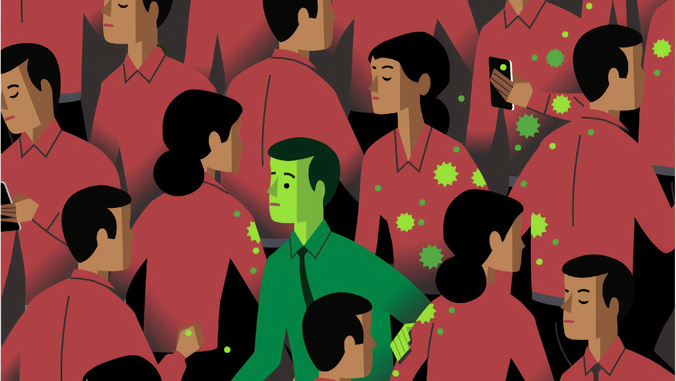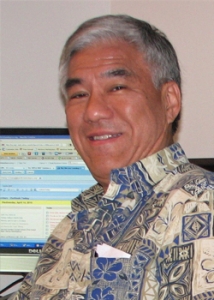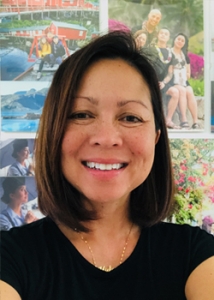
By the end of this week, the University of Hawaiʻi–Hawaiʻi State Department of Health (UH-DOH) Contact Tracing Training Program will have trained nearly 450 qualified individuals who will be available to be activated by the DOH, as needed, to trace known contacts of COVID-19 positive cases throughout Hawaiʻi.
Track 1: Contact Tracing for Clinical Healthcare Professionals, a 1.5-day training course, trained a total of 393 individuals after its completion on July 17. Track 2: Community Contact Tracer Training, a six-week course available year-round for those with bachelor’s degrees without necessarily having a clinical health background, will graduate 49 individuals from its first cohort on July 24.
Aimee Grace, UH System lead and director of the UHealthy Hawaiʻi Initiative, reiterated the university’s appreciation to the community for all of the volunteerism and support. “We remain incredibly grateful to every person that has stepped up and reached out to be part of the UH-DOH Contact Tracing Training Program,” she said. “Together, we will help to support the DOH in its contact tracing needs to best address the COVID-19 pandemic while building critical health workforce capacity for Hawaiʻi’s future.”
Three participants from the UH-DOH program share more about why they decided to apply and become part of the state’s cadre of contact tracers during this critical period.
Clifford Chang

Chang of Honolulu was part of Track 1 offered by UH Mānoa’s School of Nursing and Dental Hygiene. Chang recently retired after 15 years as executive director of the Pacific Islands Primary Care Association and currently works as a public health consultant. An alumnus of UH Mānoa earning his BA in environmental health and an MA in public health in community health development, Chang’s extensive background in public health spans more than 40 years.
Chang said he took the accelerated day-and-a-half course to be a resource to the state. “Contact tracing is a time-tested public health tool that can assist in limiting the spread of the virus. As I am no longer working full-time, I am able to devote some time in conducting the very essential, but labor and time consuming contact tracing outreach.”
Through the simulations and role playing conducted during the course led by Associate Dean and Professor Kristine Qureshi, Chang gained a better understanding of how to deal with someone when they find out they have been exposed to COVID-19. “It was invaluable to learn the variety of ways the person being notified may react—surprise, fear, suspicion, mistrust, denial, anger, cooperation—and how one may best respond,” he explained.
Since completing the course, Chang has begun volunteering as a contact tracer with DOH’s Disease Outbreak Control Division. He hopes to be hired by DOH on a full-time basis.
Luisa “Mickey” Abaygar

Originally from the Philippines, Abaygar of Mākaha, Oʻahu, is part of the first cohort of Track 2 offered by UH West Oʻahu. Her six-week training ends on July 24. A graduate of the University of the Philippines earning her BA in communication (broadcasting), she worked as a DJ/VJ, newscaster and in media sales in Manila before moving to the U.S.
Prior to COVID-19, Abaygar worked as a purchasing manager at Paradise Cove until it was forced to temporarily shut down. Inundated by news about COVID-19 locally and around the world, she felt fearful and helpless. “I thought, ‘How can I help, especially my immediate community in Waiʻanae? In what capacity can I contribute in tackling this pandemic?’” Abaygar said.
She took the Johns Hopkins contact tracing training course and when the UH-DOH program was announced, Abaygar also applied to help in the state’s battle to control the pandemic.
Abaygar praised Track 2 leaders and UH West Oʻahu Associate Professor Ricardo Custodio and Assistant Professor Camonia Graham-Tutt. “They were extremely effective and knowledgeable in their respective fields and are very cognizant of the fact that this contact tracing endeavor has to be community and team based,” she said. “Having that understanding will help address the needs of our communities and ʻohana by providing important COVID-19 information and assisting them with services they need to safely quarantine.”
Ilima DeCosta

DeCosta of Volcano on Hawaiʻi Island is also a student in the first cohort of Track 2, finishing up her last week of the online training course. She earned her BA in political science and studied anthropology at UH Mānoa. DeCosta is a Native Hawaiian cultural practitioner. She is currently helping with a community initiative to convert a local restaurant into a healthcare center in Volcano Village that will support a large Native Hawaiian population who lack access to essential health care.
Growing up in Kāneʻohe, DeCosta was deeply influenced by the Mango Man, a one-time community fixture who lived on the streets for decades. His circumstances made her aware of the need for a more robust community public health system. This fueled her passion for serving Hawaiʻi’s homeless population for more than a decade. DeCosta was responsible for founding the HMSA Homeless Innovation Team whose mission is to determine how to deliver safe, effective and affordable healthcare to those living unsheltered.
“When the Department of Health put out the kahea (call) to train community contact tracers, I saw it as an opportunity to learn more about the disease, overcome my personal anxieties related to the pandemic and to serve my community in a meaningful way,” said DeCosta. ”Like the HMSA Homeless Innovation Project, the community contact tracer training program is an opportunity for me to improve and protect the overall health of Hawaiʻi’s residents.”
She added, “We all have more in common than we think; in order to maintain our overall community public health and to survive this pandemic, we need to focus on our shared strengths and commonalities.”
Going forward
While Track 1 has formally completed, Track 2 has six more upcoming six-week cohorts of approximately 30–35 individuals each until the end of May 2021. The UH-DOH Contact Tracing Training Program also has an arm to train 100 community health workers (CHWs) over the next academic year. CHWs serve as community health liaisons for high-risk populations and work together with contact tracers. The requirement for the CHW program is a high school diploma or GED.
For more information on any of these programs, email oshi@hawaii.edu or sign up at go.hawaii.edu/AYD.
—By Arlene Abiang

